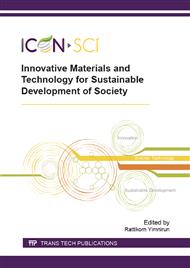p.263
p.267
p.271
p.275
p.279
p.283
p.287
p.291
p.295
Variations of the Precipitation Water Vapor by Using GPS Data Triggered Raining in the Summer of Thailand
Abstract:
The variation of water vapor can be detected from the Global Positioning System (GPS) data. The GPS signal was delayed when propagated through the wet atmosphere. The delayed signal can be retrieved into Precipitation Water Vapor (PWV) data. The GPS data of CUSV station from 2009 to 2012 were used in this research. The results showed that the PWV varied during the summer of Thailand. The PWV were slightly increased from 20 mm at the beginning of the season to 40 mm at the end of season. The increased PWV data were shown as linear line. A slope of the linear line may relate with the amount of the cumulative rain in the season. The steeper line might relate to the great number of raining in the end of the season, otherwise, the fairly gradual line might relate to the raining at any time in the season. The high level of PWV up to around 33 mm could induce the rain in the summer of Thailand.
Info:
Periodical:
Pages:
279-282
Citation:
Online since:
October 2015
Authors:
Price:
Сopyright:
© 2015 Trans Tech Publications Ltd. All Rights Reserved
Share:
Citation:


